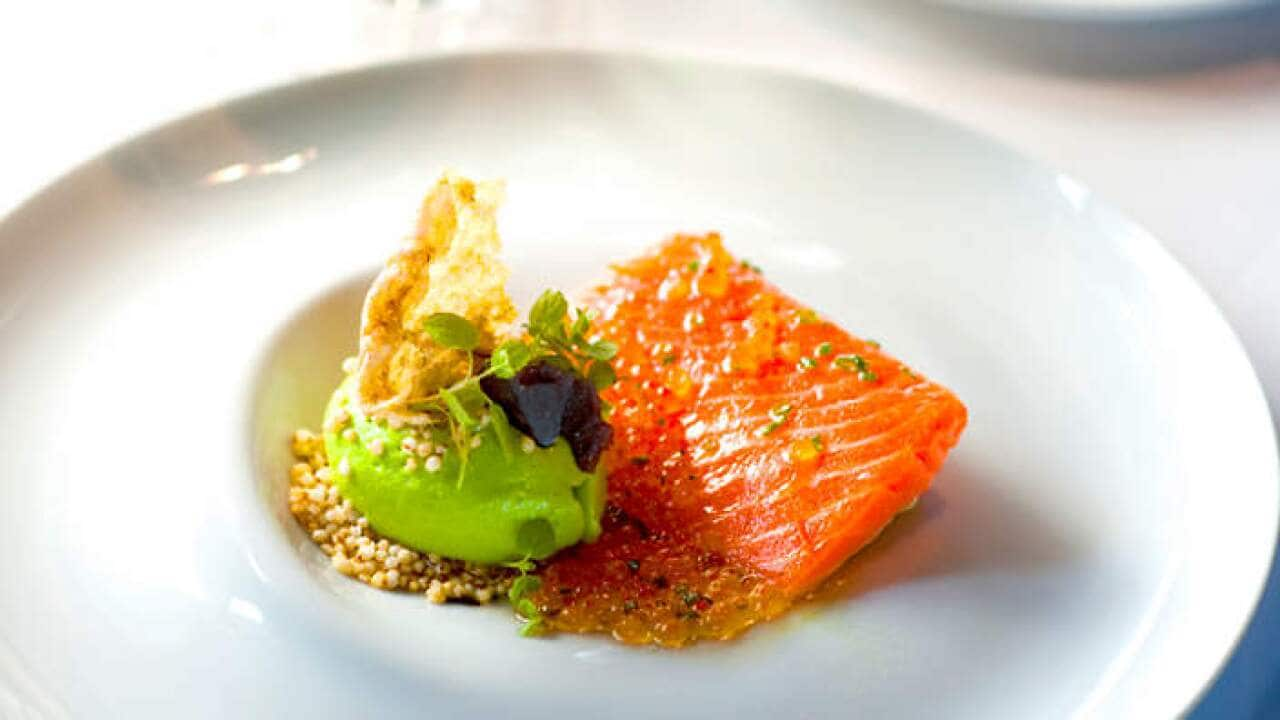In every commercial kitchen you’ll find a line of chefs. We’re not being literal here, the line represents the ascending position of each person.
It all starts with the apprentice. That blossoming talent whose main role is to assist those more experienced. Like all decent internships, apprenticeships give young guns the opportunity to develop skills, techniques, hands-on experience and contacts. Some will find out fine dining is their schtick, others will develop their know-how in a certain cuisine.
The line cook is another entry-level position focussed on helping out the kitchen wherever possible. It may be peeling potatoes one day or plating dishes on another, so cooks in this role need to learn fast.
The station chef or chef de partie is in charge of one part of the kitchen. It may be sauces, soups or salads, for instance. Working under the guidance of the sous chef, those in this role are responsible for the quality and appearance of their station.
Next come the sous chef, the right-hand of the executive chef. In some kitchen there are several sous chefs who will micromanage an area of the kitchen, in others, everything is up to one. Sous chefs will oversee the quality and plating consistency of those beneath them, ensuring everything is up to scratch.
At the top of the line sits the boss – the executive chef. In some kitchens, this person may be known as the head chef or chef de cuisine. This position is prized in the food industry, as it often takes years of formal training and up to a decade of on-the-job experience to land the role. Of course, there are some gifted souls, such as The Chefs’ Line judge Dan Hong, who rise to the role while they’re still young and sneaker-clad, but nonetheless, executive chefs are respected by all. The role deals less with food preparation and more with managing the flow and consistency of the kitchen. Executive chefs will create and plan menus, devising new dishes for the changing seasons.
Of course, there are several other individuals who make a kitchen run smoothly. Depending on the size and quality of the restaurant, not all of these roles are necessary, but in a hotel kitchen or fine dining bistro, you’re bound to find most, if not all. In no particular order there’s the saucier (responsible for, yep, sauces) most commonly found at French venues; the fish cook (poissnier) who prepares and cooks seafood; the vegetable cook (entremetier) who deals with soups, vegetables and rice dishes; the meat cook (rotisseur) who’s responsible for all the delicious meat; and the fry cook who arguably has the smelliest job of all. Along the line, you’ll also find pastry chef (patissier) whose work is centred on pastries, breads and desserts. Pastry chefs will often need special qualifications from a specialised baking school, rather than regular culinary training. In certain kitchens, such as dessert-focussed restaurants, the patissier will hold a lot of cred.
And finally there is the expediter, who may also be the restaurant manager, owner or, in some cases, executive chef. This central role connects the kitchen and the waitstaff, ensuring orders go into the kitchen, and high-quality dishes go out.
Now that you have mastered this line, enter SBS with a brand-new cooking series that is set to blow food culture and cuisine out of the water and tackle this chefs' line. Each week, will celebrate a different cuisine, a different restaurant, as home cooks earn their cooking stripes and dish their way up the ranks going plate-to-plate with each restaurant's line. So what can you expect when a chefs' line goes up against passionate home cooks every weeknight...?
Have we got your attention and your tastebuds? The Chefs’ Line premieres Monday 6 August, 6pm weeknights, on SBS followed by an encore screening at 9.30pm on SBS Food Network. Episodes will be available after broadcast via . Join the conversation #TheChefsLine on Instagram , Facebook and Twitter . Check out for episode guides, cuisine lowdowns, recipes and more!




